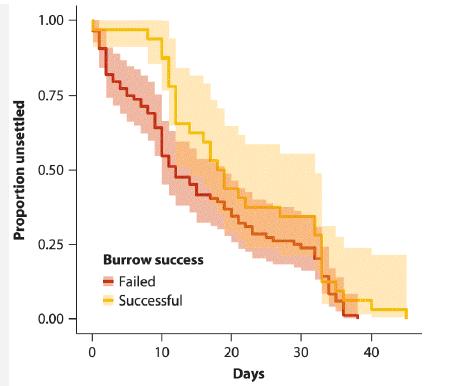Each spring, 9-month-old desert isopods (Hemilepistus reaumuri) emerge from their natal burrows and walk many hundreds of
Question:
Each spring, 9-month-old desert isopods (Hemilepistus reaumuri) emerge from their natal burrows and walk many hundreds of meters before settling into a new burrow. Settling is mainly done by females, with males joining afterward to form a mated pair. Burrows occupied by a pair can either succeed in producing a family that survives until autumn or the burrow may fail to produce a family that survives to autumn. Baker and Rao (2004) used survival analysis to investigate correlates of burrow success. The following figure compares failed and successful burrows with the amount of time taken by the occupying isopods to settle after emerging (settling time).

a. What is the event that is tracked in these “survival curves”?
b. Which category of burrow is associated with longer settling times: successful or failed burrows?
c. What is the approximate median time to settling for successful burrows? Approximate by eye.
d. Name a statistical technique that would allow a test of the difference between these two groups in survival rates.
e. What are the assumptions of the method in (d)?
Step by Step Answer:

The Analysis Of Biological Data
ISBN: 9781319226237
3rd Edition
Authors: Michael C. Whitlock, Dolph Schluter





